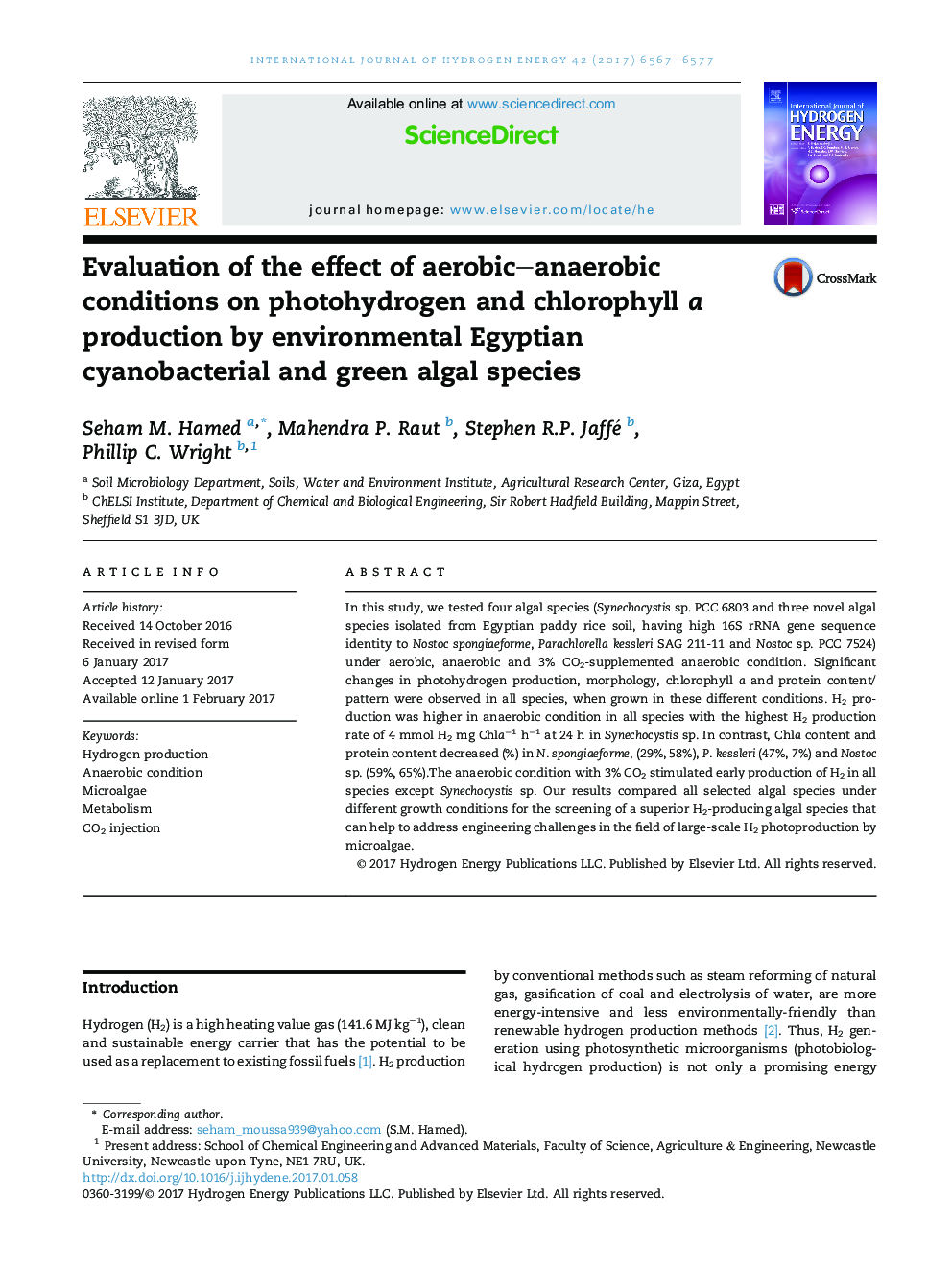| Article ID | Journal | Published Year | Pages | File Type |
|---|---|---|---|---|
| 5146097 | International Journal of Hydrogen Energy | 2017 | 11 Pages |
Abstract
In this study, we tested four algal species (Synechocystis sp. PCC 6803 and three novel algal species isolated from Egyptian paddy rice soil, having high 16S rRNA gene sequence identity to Nostoc spongiaeforme, Parachlorella kessleri SAG 211-11 and Nostoc sp. PCC 7524) under aerobic, anaerobic and 3% CO2-supplemented anaerobic condition. Significant changes in photohydrogen production, morphology, chlorophyll a and protein content/pattern were observed in all species, when grown in these different conditions. H2 production was higher in anaerobic condition in all species with the highest H2 production rate of 4 mmol H2 mg Chlaâ1 hâ1 at 24 h in Synechocystis sp. In contrast, Chla content and protein content decreased (%) in N. spongiaeforme, (29%, 58%), P. kessleri (47%, 7%) and Nostoc sp. (59%, 65%).The anaerobic condition with 3% CO2 stimulated early production of H2 in all species except Synechocystis sp. Our results compared all selected algal species under different growth conditions for the screening of a superior H2-producing algal species that can help to address engineering challenges in the field of large-scale H2 photoproduction by microalgae.
Related Topics
Physical Sciences and Engineering
Chemistry
Electrochemistry
Authors
Seham M. Hamed, Mahendra P. Raut, Stephen R.P. Jaffé, Phillip C. Wright,
